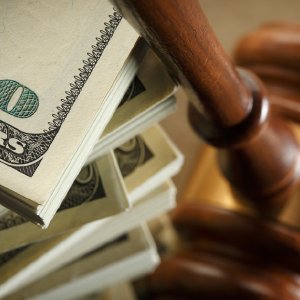Tracing A Network of Crime: How Pharma Distributors Acted as the Middlemen in the Opioid Epidemic

Casimiro PT/Shutterstock.com
Pharmaceutical distribution companies are not household names. Most people don’t even know such mega corporations exist. But they do, and they act as the middlemen, tasked with the extremely sensitive responsibility of distributing expensive, sometimes addictive and mind-altering pharma drugs from the manufacturers’ factories out to the thousands of pharmacies, clinics, and hospitals across America.
The United States has only a few pharmaceutical distributors. Just three companies, AmerisourceBergen, McKesson, and Cardinal Health, are responsible for 90% of opioid distribution. Unfortunately, all three companies played a role in escalating America’s fatal opioid addiction emergency, from warning pharmacies at risk of being reported to the DEA to helping other pharmacies circumvent rules on how many opioids they were allowed to order. The distributors also devised systems to evade regulators, ordering far more opioids from manufacturers than they needed to, and distributing far more opioids to pharmacies than the communities served by those pharmacies required.
Overcoming the nation’s opioid addiction epidemic will involve many steps, campaigns, and actions. One such action includes holding pharmaceutical distributors accountable for the role they played in creating the epidemic.
A Summary of Years of Negligence and Malpractice
In recent years, attorneys general from New York, Vermont, and Washington State have brought lawsuits to bear against AmerisourceBergen, McKesson, and Cardinal Health, the three companies responsible for the vast majority of opioid distribution. These are also three of the 15 largest American companies by revenue. The attorneys general allege a long list of misconduct on the part of the mega-corporations, all of which, if proven true, can help explain why the opioid epidemic escalated so quickly.
“McKesson kept shipping to two pharmacies six years after learning that they had been filling prescriptions from doctors who were likely engaging in crimes. The shipments stopped only last year, after the doctors were indicted.”

Reporters for the New York Times focused on specific instances in which pharma distributors acted in blatant disregard for human life by continuing to supply pharmacies that the distributors knew to be acting illegally. From the NYT, “Three-fourths of prescriptions at a Queens pharmacy supplied by Amerisource were written by doctors who were later indicted or convicted.... For more than five years, Cardinal shipped to a pharmacy with the highest oxycodone volume in Suffolk County, N.Y., despite continually flagging its orders as suspicious. McKesson kept shipping to two pharmacies six years after learning that they had been filling prescriptions from doctors who were likely engaging in crimes. The shipments stopped only last year, after the doctors were indicted.” These are just a few examples.
Attorneys general for several states now allege that drug distributors failed to halt the extreme and excessive ordering of highly addictive prescription opioids by pharmacies, pain clinics, hospitals, and specialty medical providers, even though such orders were suspicious. The AGs allege that the distributors did so because fulfilling such orders was immensely lucrative for them. For example, the three distributors mentioned above sold 1.6 billion oxycodone pills in just the state of New York between 2010 and 2018.
Meanwhile, from 1999 to 2019, approximately 247,000 Americans died from overdoses on prescription opioids, the result of what happens when pharma distributors see dollar signs as the priority rather than safeguarding public health.
This is not the first time that pharma distributors have come under the magnifying glass for their malpractice. In 2017, McKesson agreed to a $150 million settlement for ignoring suspicious opioid orders. And that’s after McKesson has already paid a $13.25 million settlement in 2008 for the same crime. Cardinal paid $64 million in settlements in 2012, 2016, and 2017, with similar settlements struck by other distributors.
Most importantly, the companies did not implement better tracking policies to ensure that customers were not ordering too many opioids. And when they did, the efforts were laughably insufficient, as in the case of Cardinal Health dedicating a woefully insignificant 2 of its 40,000 employees to tracking suspicious opioid orders.
The harsh truth was that the distributors saw that paying settlement fines was worth it because profits were astronomically high thanks to excessive orders from pharmacies. Quoting Representative Kathy Castor of Florida, who questioned top officials for pharma distributors in a Congressional hearing regarding a small pharmacy in West Virginia that received 9,000 opioid pills per day, “Don’t you take responsibility? You saw that paying the penalties on your settlement agreements was a cost worth paying because you were making so much money?”
Sadly, despite the evidence of pharma distributor malpractice, such companies are incredibly powerful. They are very large, have a lot of money and influence, and can leverage that influence on lawmakers and governing bodies. Again using New York as an example, NYT reporters shed light on how, after coming under investigation by New York AGs and other officials, several distributors assembled an army of lobbyists to influence New York state government decisions. Quoting the NYT report: “Distributors have also lined up lobbyists with ties to Gov. Andrew M. Cuomo of New York, where lawmakers included $100 million in opioid taxes or surcharges in two consecutive budgets, though last year’s measure is tied up in court. They have hired two firms founded or co-founded by one-time aides to former Gov. Mario M. Cuomo as well as Mercury Group, whose executives include former advisers to the current governor.”
Attorneys General Move to Levy the Justice Department Against Pharma Distributors

But lobbyists or no lobbyists, more and more attorneys general are coming together to hold pharma distributors accountable for their role in launching an epidemic that has killed hundreds of thousands of Americans. The NYT report from the last section was written in 2019. To fast forward just two years, attorneys general, cities, counties, and individuals have made progress in bringing pharma distributors to justice. Currently, several states are working together to settle a $26 billion lawsuit with AmerisourceBergen, Cardinal Health, McKesson, and Johnson & Johnson. The settlement is not yet complete, but it is moving towards completion.
One of the attorneys general in the case, Josh Stein from North Carolina, was deeply involved in the settlement. His office released a statement outlining exactly how his state’s share of the settlement would be spent and outlining what the court orders levied against AmerisourceBergen, Cardinal Health, McKesson, and Johnson & Johnson would require the companies do to ensure that future malpractice would be prevented. The settlement includes such orders as:
- “Prohibit sales staff from influencing decisions related to identifying suspicious opioid orders.”
- “Establish a centralized independent clearinghouse to provide all three distributors and state regulators with aggregated data and analytics about where drugs are going and how often, eliminating blind spots in the current systems used by distributors.”
- “Not fund or provide grants to third parties for promoting opioids.”
- “Not lobby on activities related to opioids.”
- “Prohibit shipping of and report suspicious opioid orders.”
If the current settlement is finalized and enforced, pharma distributors will finally be made to implement ethical and conscientious practices in safely distributing potentially dangerous drugs.
The Harm of the Opioid Epidemic
It doesn’t take extensive inquiry to uncover the malpractice of pharma distributors, manufacturers, and some clandestine pharmacies, doctors, and clinics. Though opioid manufacturing, distributing, prescribing, and dispersing skyrocketed during the first two decades of the 21st-century, reported instances of physical pain among the American people did not also skyrocket. Why was the drug industry pushing out billions of pain pills if the American people didn’t need them?
The age-old mantra of ‘Follow the money’ applies here. Sadly, while hundreds of pharma execs and crooked doctors and pharmacists got rich, approximately 500,000 Americans died from opioid overdoses between 1999 and 2019, according to CDC data.
Holding companies accountable that engage in illegal activities to pursue profit is essential, but that’s only the first step in overcoming America’s addiction epidemic. The real solution lies in providing real, workable treatment programs to those who have become addicted to these drugs.
Sources:
- https://www.nytimes.com/2019/04/22/health/opioids-lawsuits-distributors.html
- https://www.cdc.gov/drugoverdose/deaths/prescription/overview.html
- https://ncdoj.gov/attorney-general-josh-stein-announces-26-billion-agreement-with-opioid-distributors-manufacturer/
- https://www.cdc.gov/opioids/basics/epidemic.html
Reviewed by Claire Pinelli; ICAADC, CCS, LADC, RAS, MCAP, LCDC


 ®
®